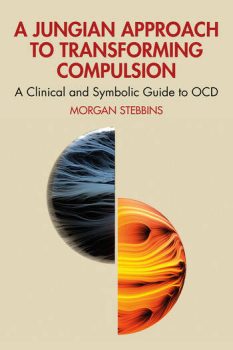Obsessions and compulsions have plagued humanity for millennia, and yet no major psychological theory has considered their content to be meaningful – until the work of Carl Jung. This book presents Jung’s symbolic approach to the understanding and treatment of OCD.
The strength-based Jungian perspective restores dignity and efficacy to what can be an experience of frustration and, for the sufferer, humiliation. In this book, Morgan Stebbins employs his 30 years of practice as a clinician, professor and teacher to outline a step-by-step process: we see how obsessional ideas and compulsive actions can be understood from a symbolic standpoint, and how that both changes the personality and heals the suffering from unwanted ideas and urges.
Featuring clinical material throughout, this will be a valuable guide for Jungian analysts, clinicians of all kinds, as well as individuals in advanced study and clinical training who want to learn about the Jungian approach to the spectrum of obsessive and compulsive struggles.
Table of Contents
Introduction: Compulsions and Obsessions—a New Approach Part 1: The Enigma of Compulsion in History 1. Ancient Spirits and the Psychology of Non-Ego Actors 2. Modern Psychological Models of Compulsion and Obsession Part 3: The Jungian Model 3. The Jungian Scene 4. The Paradox of the Psyche in Jung 5. The Mystery of Compulsion 6. The Self and the Language of the Unconscious Part 3: Practical Application 7. Compulsion and the Four Moves of Transformation 8. It Begins With Noticing 9. Measuring and Weighing the Images 10. Translating the Language of the Psyche 11. Translation in Application 12. Acting According to the Matrix of Meaning Conclusion: The Mutual Transformation

